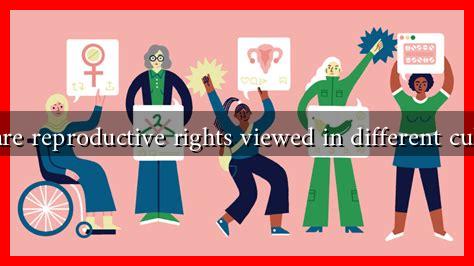-
Table of Contents
How Are Reproductive Rights Viewed in Different Cultures?
Reproductive rights encompass a range of issues related to the ability of individuals to make informed choices about their reproductive health. These rights include access to contraception, safe abortion, maternal healthcare, and education about reproductive health. However, the perception and implementation of these rights vary significantly across different cultures and regions. This article explores how reproductive rights are viewed in various cultural contexts, highlighting key differences and similarities.
The Western Perspective: Autonomy and Choice
In many Western countries, reproductive rights are often framed within the context of individual autonomy and personal choice. The feminist movements of the 20th century played a crucial role in advocating for women’s rights to control their reproductive health. Key milestones include:
- The legalization of contraception in the 1960s and 1970s.
- The landmark Roe v. Wade decision in 1973, which recognized a woman’s right to choose abortion in the United States.
- Ongoing advocacy for comprehensive sex education and access to reproductive healthcare.
Despite these advancements, challenges remain. For instance, recent legislative changes in some U.S. states have restricted access to abortion services, sparking nationwide debates about women’s rights and healthcare access.
Eastern Perspectives: Cultural and Religious Influences
In many Eastern cultures, reproductive rights are often influenced by religious beliefs and traditional values. For example:
- In predominantly Muslim countries, interpretations of Islamic law can shape views on contraception and abortion. While some countries, like Turkey, have relatively liberal policies, others, such as Saudi Arabia, impose strict regulations.
- In Hindu-majority India, reproductive rights are often viewed through the lens of family honor and societal expectations. Although the country has made strides in maternal health, access to safe abortion remains a contentious issue.
In these contexts, reproductive rights are frequently intertwined with issues of gender equality and social justice. Activists in these regions often face significant challenges, including legal restrictions and societal stigma.
Latin America: A Region of Contrasts
Latin America presents a complex landscape regarding reproductive rights. While some countries, like Uruguay and Mexico City, have made significant progress in legalizing abortion and expanding access to contraception, others maintain strict prohibitions. Key points include:
- In countries like El Salvador, abortion is criminalized under all circumstances, leading to severe consequences for women who seek unsafe procedures.
- Conversely, Argentina’s recent legalization of abortion in 2020 marked a significant victory for reproductive rights advocates in the region.
The Catholic Church’s influence remains strong in many Latin American countries, often complicating efforts to expand reproductive rights. However, grassroots movements continue to push for change, emphasizing the need for comprehensive reproductive healthcare.
African Perspectives: Tradition vs. Modernity
In Africa, views on reproductive rights are often shaped by a blend of traditional beliefs and modern influences. While some communities advocate for women’s health and rights, others adhere to traditional practices that may limit women’s autonomy. Notable aspects include:
- In countries like South Africa, the Constitution guarantees reproductive rights, yet access to services can be hindered by socio-economic factors.
- In contrast, in countries such as Nigeria, cultural norms and religious beliefs can restrict access to contraception and safe abortion services.
Efforts to improve reproductive health in Africa often focus on education and community engagement, aiming to bridge the gap between traditional practices and modern healthcare needs.
Conclusion: The Global Landscape of Reproductive Rights
Reproductive rights are viewed through diverse cultural lenses, influenced by factors such as religion, tradition, and socio-economic conditions. While progress has been made in many regions, significant challenges remain. Understanding these cultural perspectives is crucial for advocates and policymakers working to promote reproductive rights globally.
As the conversation around reproductive rights continues to evolve, it is essential to recognize the importance of cultural sensitivity and local context in addressing these issues. By fostering dialogue and collaboration, we can work towards a future where reproductive rights are universally respected and upheld.
For further reading on reproductive rights and their cultural implications, consider exploring resources from organizations like Planned Parenthood and UNFPA.




